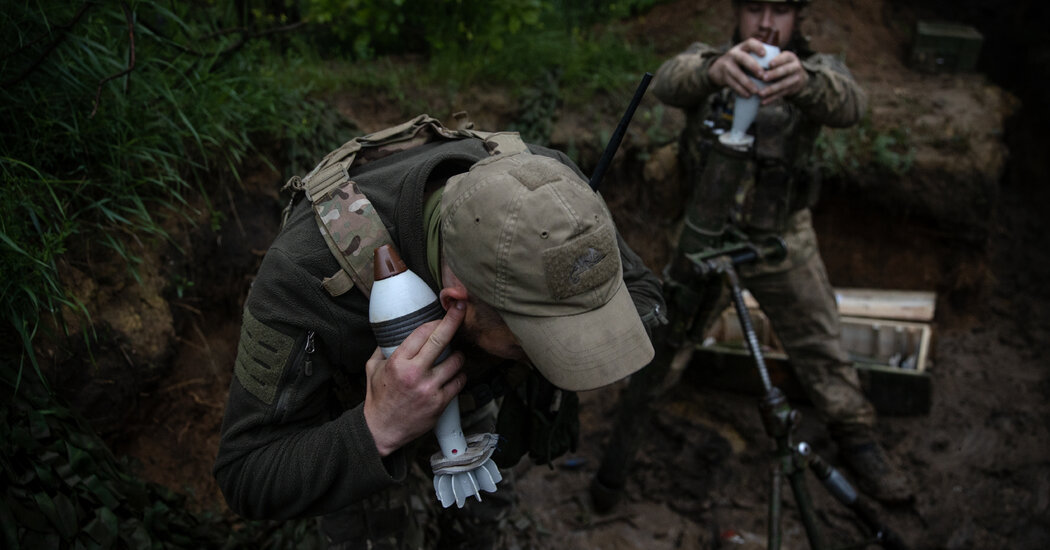Death Toll in India From Cyclone Biparjoy Climbs to 5
At least two people in India were killed and dozens were injured after Cyclone Biparjoy made landfall in the western part of the country near the border with Pakistan, knocking out power in more than 4,000 villages, damaging roads and uprooting trees, the authorities said on Friday.
Officials viewed the relatively low death toll as a result of mass evacuations ahead of the storm: Over 100,000 people in India and over 70,000 in Pakistan were moved from vulnerable areas. In India, the authorities said they had evacuated 100,000 people.
The storm, which had lingered for days over the Arabian Sea, was weakening after it made landfall on Thursday night in the western Indian state of Gujarat, near the town of Naliya. By Friday night, Biparjoy was forecast to become the equivalent of a tropical depression, the India Meteorological Department said in a bulletin.
A father and son, both shepherds, were swept away after they entered a flooded area to save their livestock in Bhavnagar district, according to state officials in Gujarat. So far, Pakistan has not reported any casualties.
Their deaths raised the number of causalities related to Biparjoy, which means “disaster” in Bengali, to five. Early this week, three boys were killed after they drowned off the coast of Mumbai, officials said, and another was missing.
“Early identification of areas that were likely to be impacted by the cyclone and timely evacuation of people living within 10 km of the coasts are the biggest reasons” for the relatively low death toll, Kamal Dayani, a senior Gujarat government official, told the Reuters news agency. “Our focus from the beginning was on preventing loss of lives, not just human lives but even animals.”
The state government in Gujarat provided more than 1,500 shelters for those living in the path of the cyclone.
The storm had caused power outages in more than 4,600 villages in Gujarat, officials said in a news release, but electricity had been restored on Friday in about 3,580 villages. Strong winds had caused about 5,000 power poles and 1,100 trees to be knocked down, state officials said.
“This is one of the largest evacuations in Gujarat’s history,” Alok Pandey, the commissioner of relief in Gujarat, said in a statement. “Today we have been able to save thousands of lives after facing a natural calamity for almost five days.”
Bhavesh Patel, a farmer from the Mandvi district of Gujarat who evacuated along with his family and neighbors, said he was waiting for the rain to stop in order to return home. He said some residents in his area were stuck on upper floors of their homes after they were flooded.
“Today or tomorrow we will go back to our homes to see what is left there,” he said. “These kind of floods are happening often now and we are some how getting to used to this.”
Pakistan is still reeling from devastating floods last year that submerged large parts of the country, killed almost 1,700 people and displaced a large population.
Compared to Biparjoy, cyclones have killed far more in India in recent years. In 2021, more than 100 people, most in Gujarat, were killed when Cyclone Tauktae struck, although tens of thousands evacuated ahead of time. In 2019, Cyclone Fani tore through the eastern state of Odisha, killing at least 89 people, according to the U.N.
A powerful cyclone that struck eastern India in 1999 killed more than 10,000 people. Since then, Indian authorities have significantly improved disaster preparation and response capabilities, and subsequent major storms have resulted in far fewer deaths.
Tropical cyclones in the Arabian Sea have become more frequent in recent decades because of warming sea-surface temperatures in the region that are enhanced by a warming climate, according to researchers.
Eduardo Medina,Christine Hauser and Mike Ives contributed reporting.


